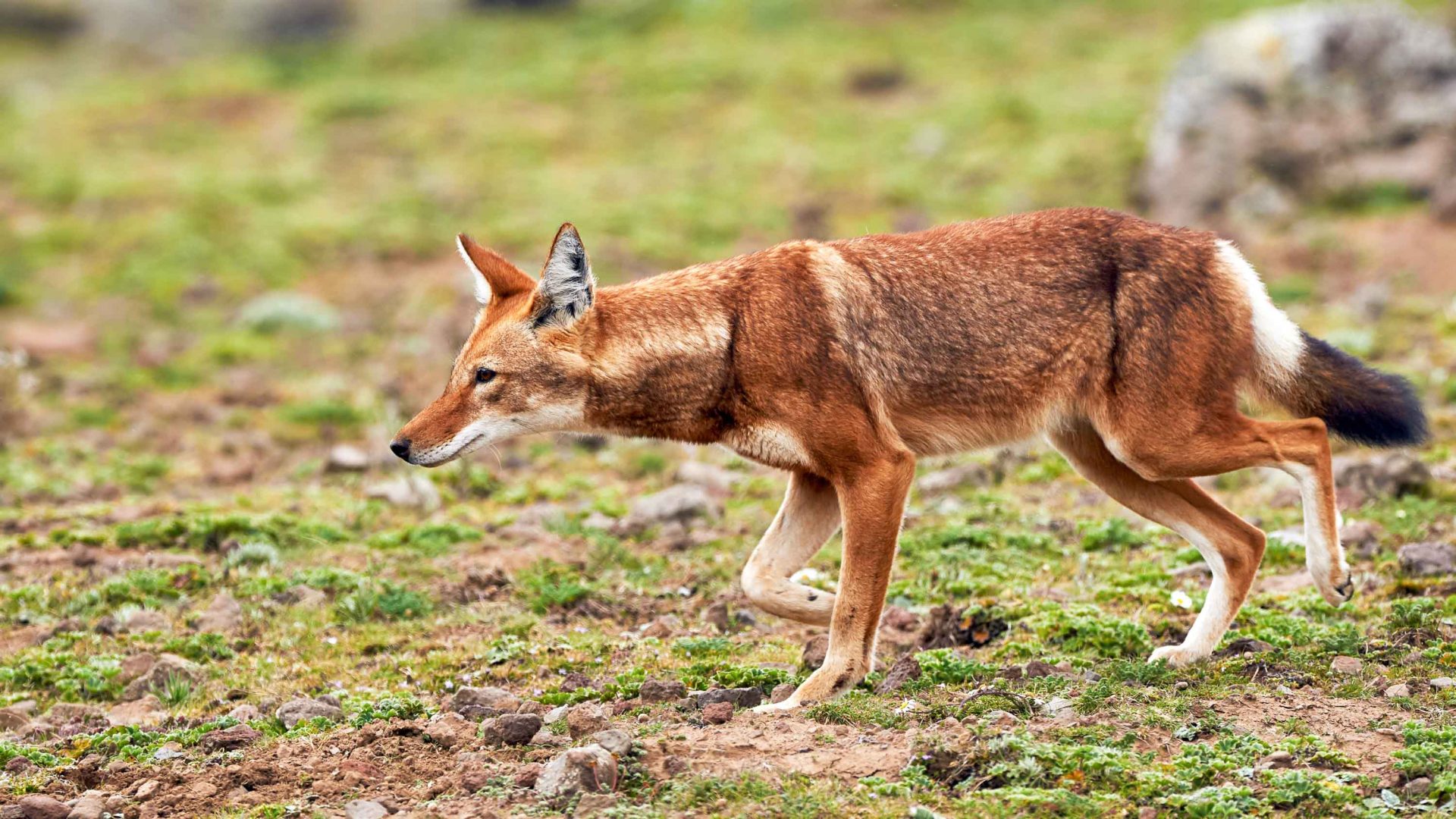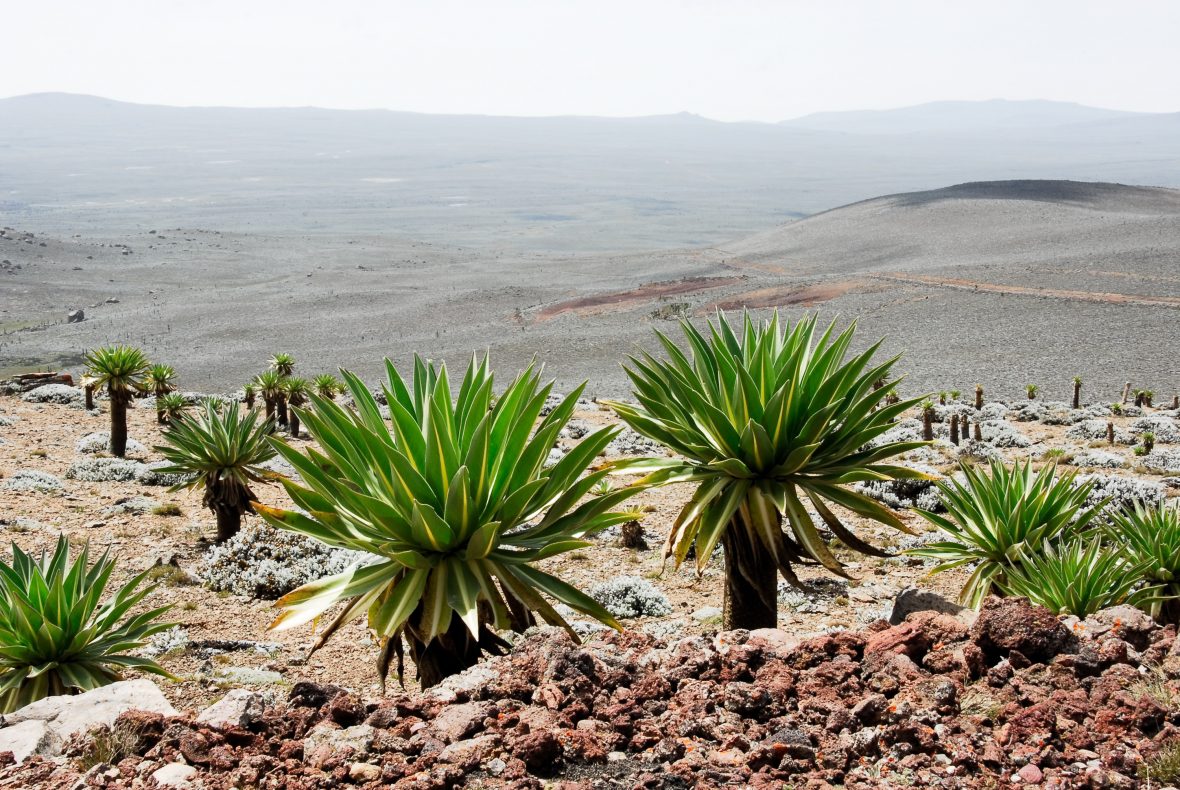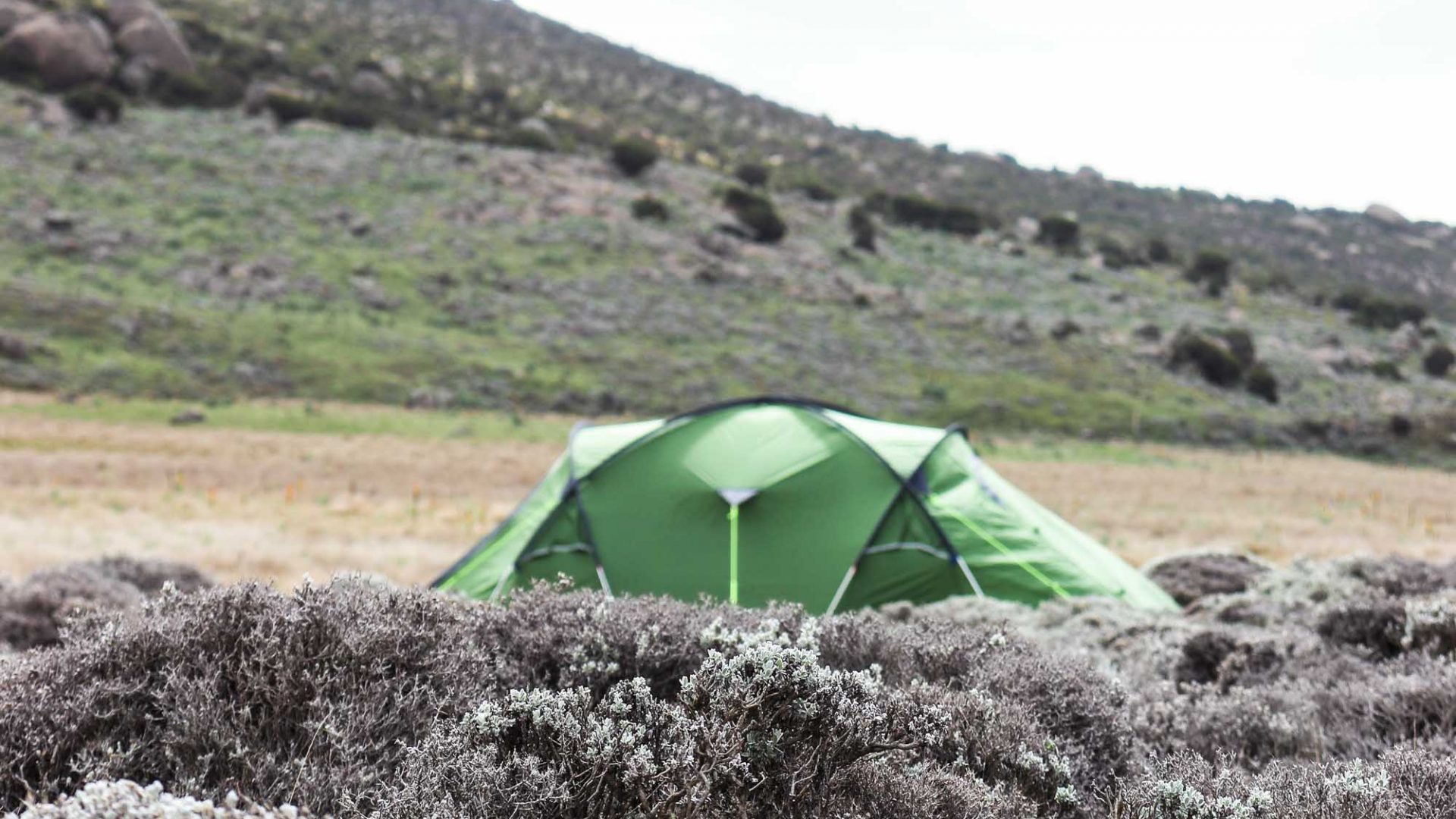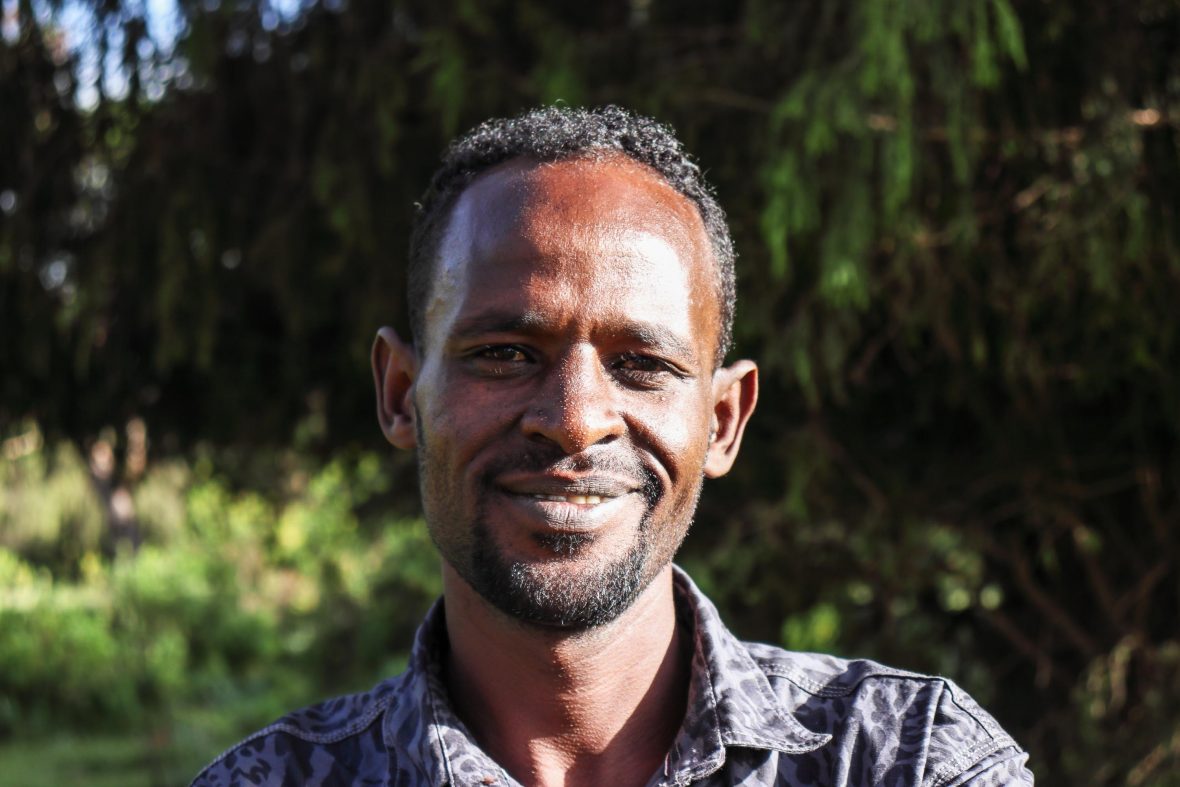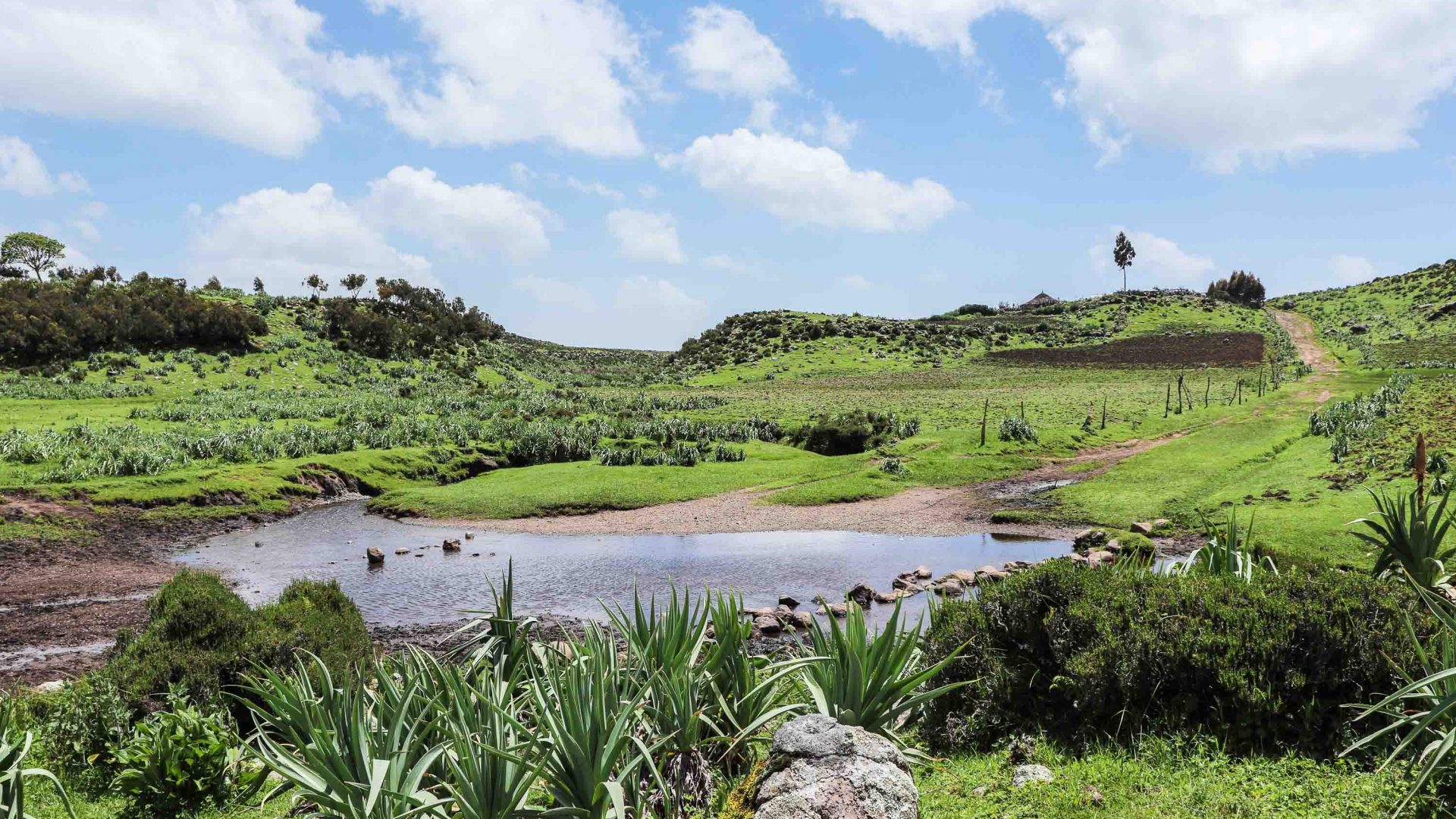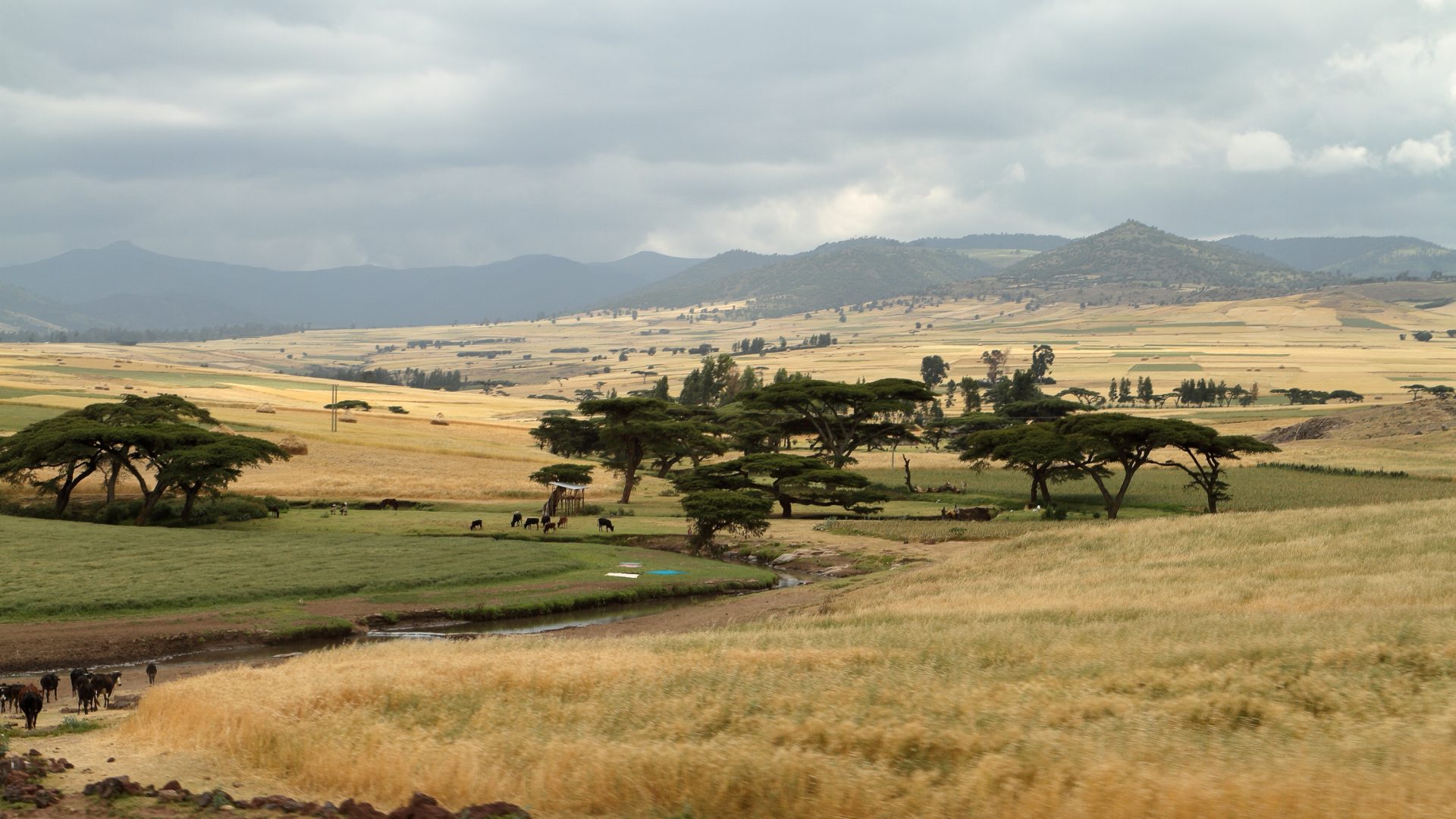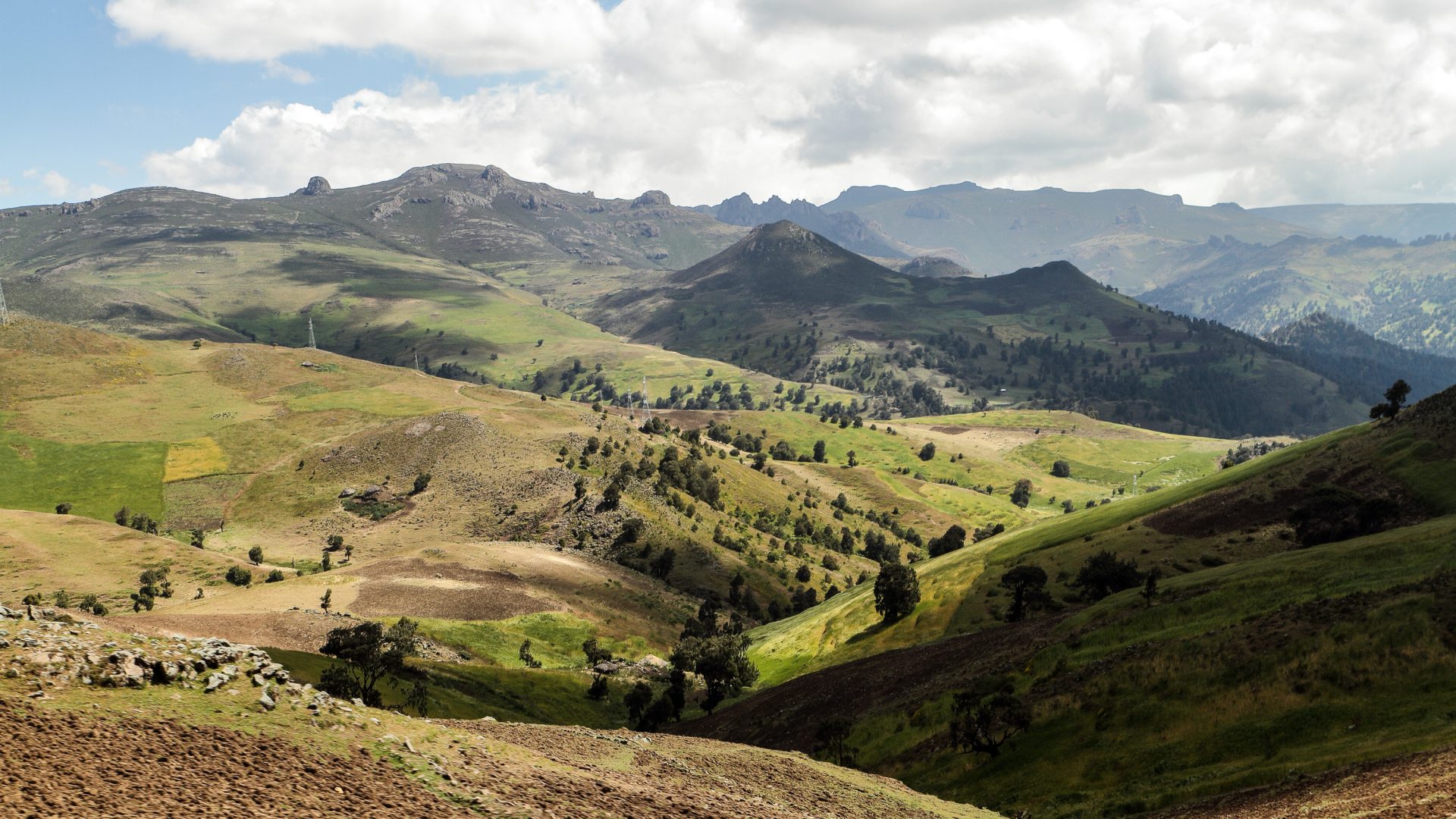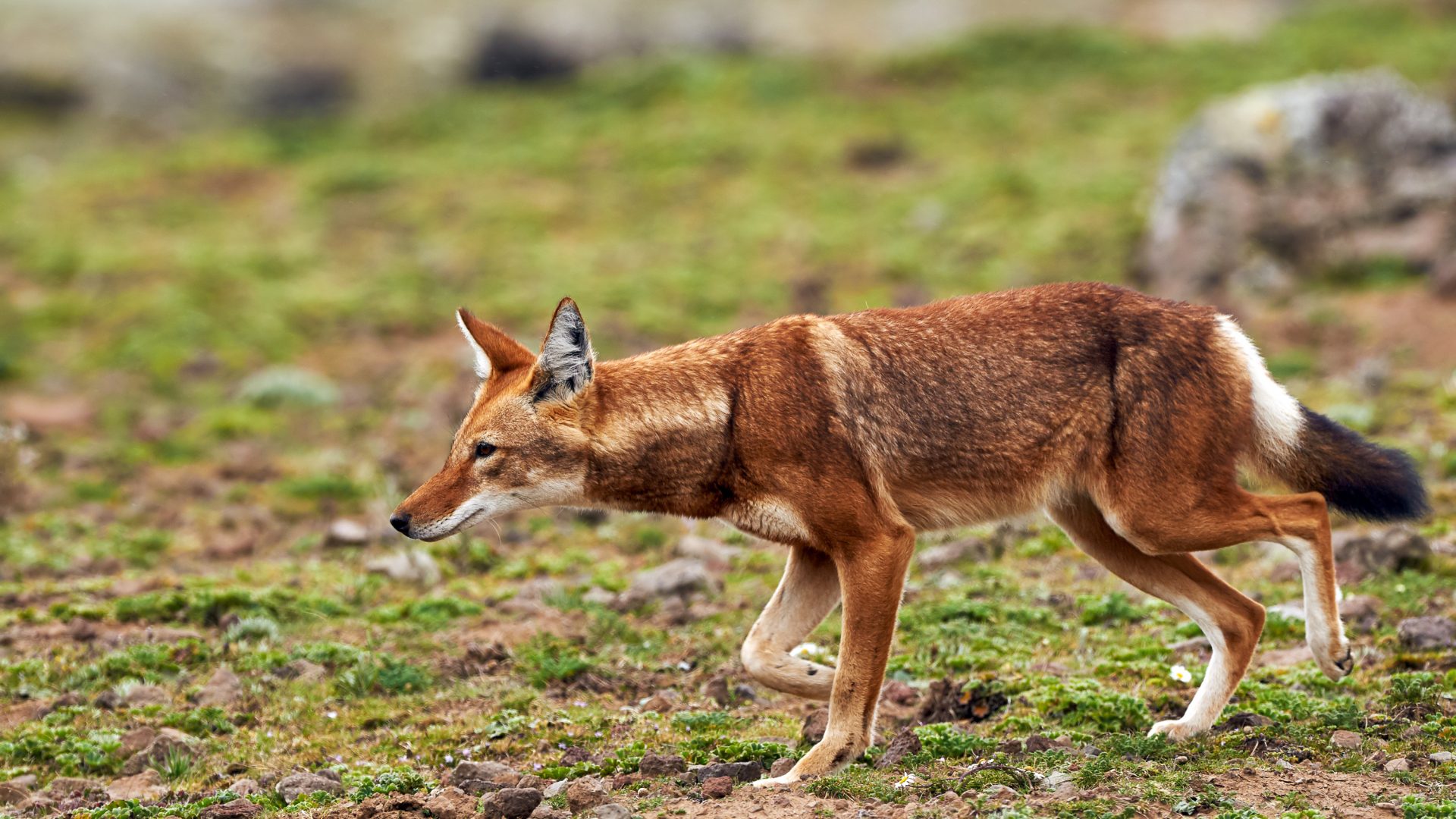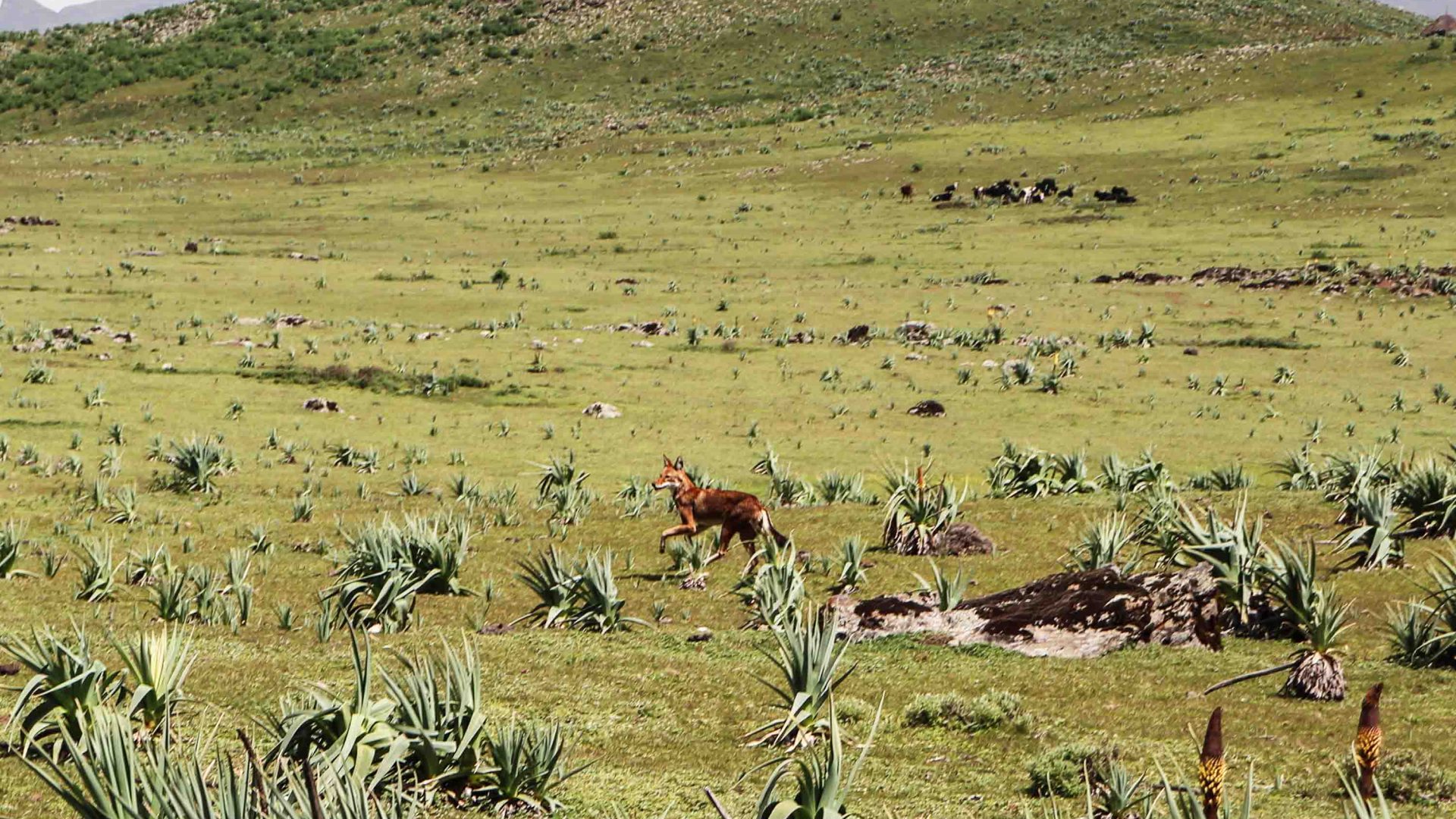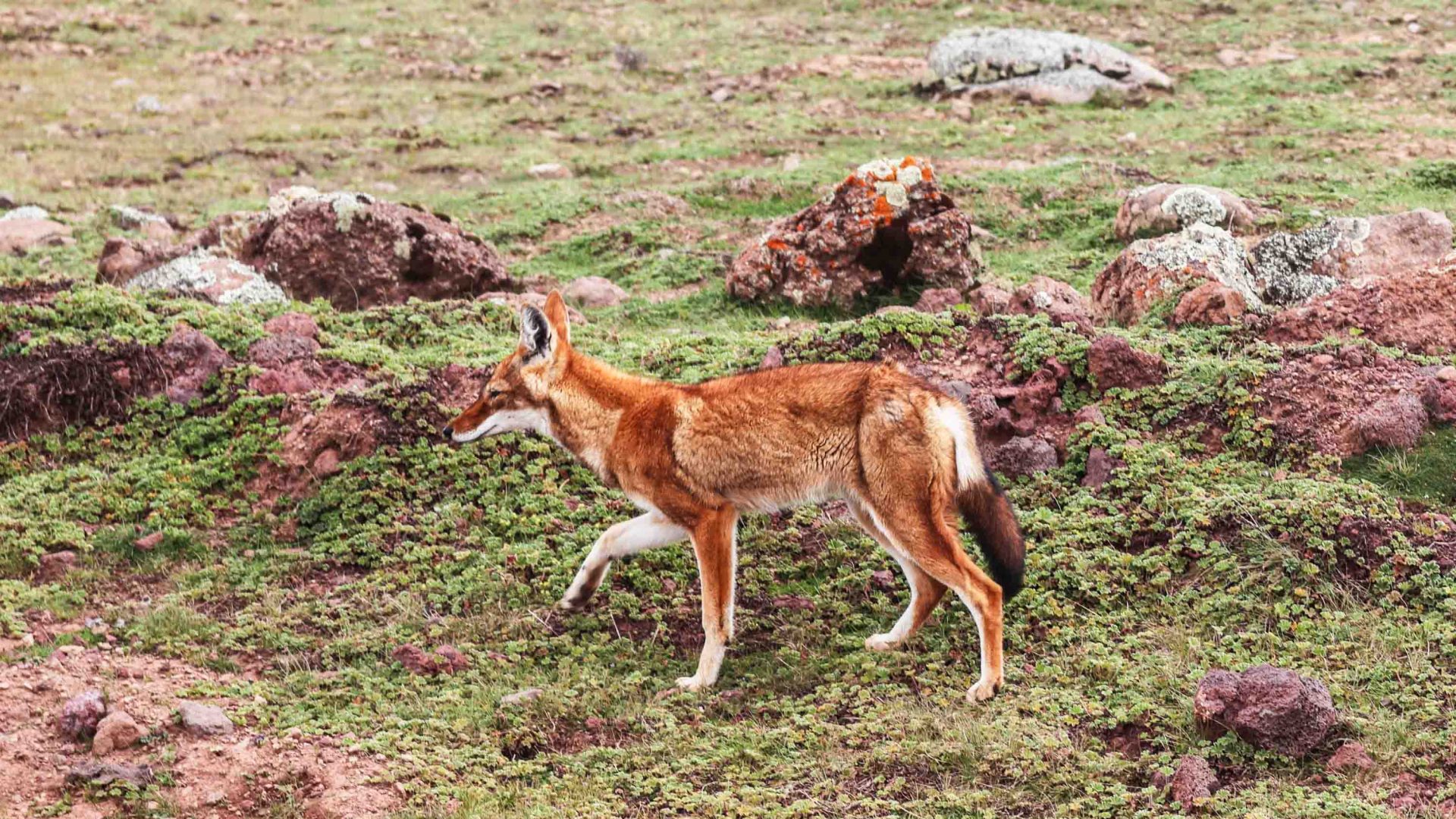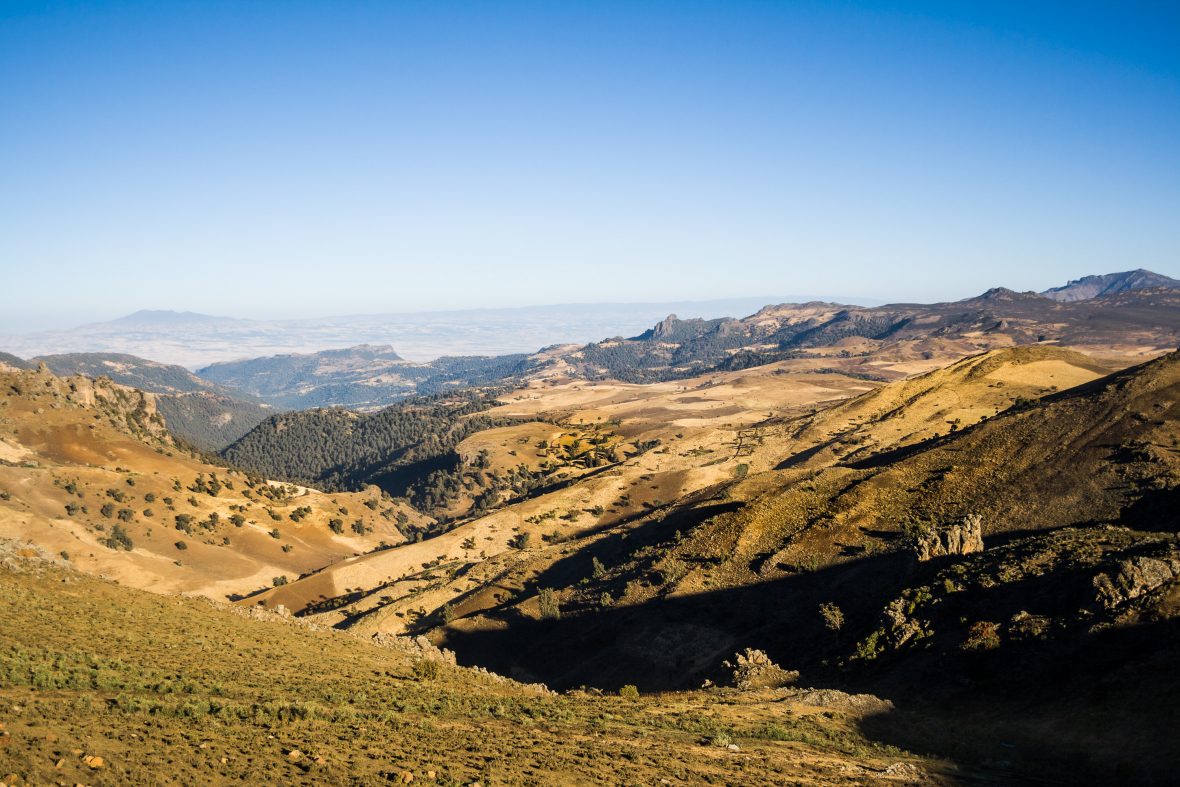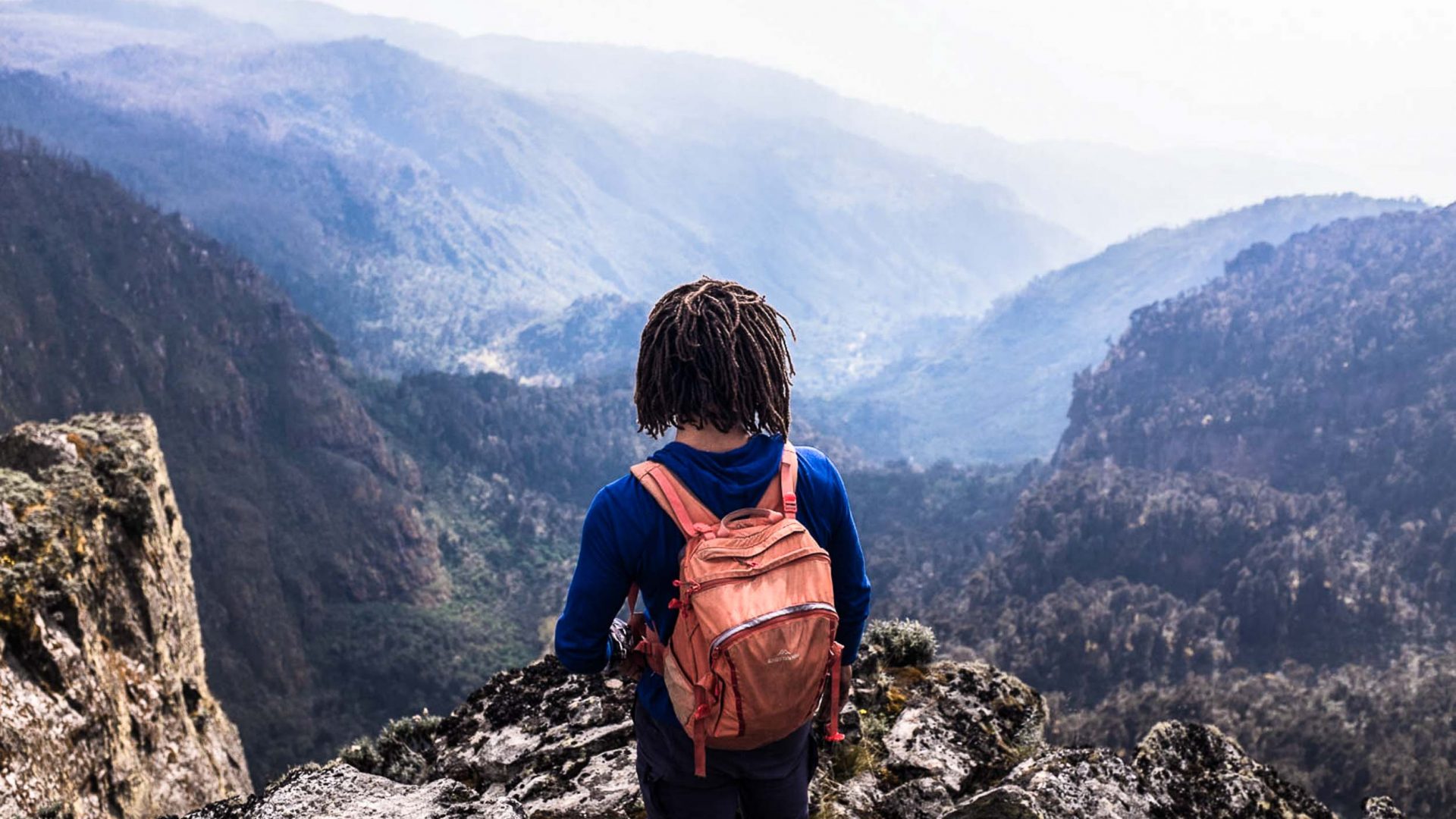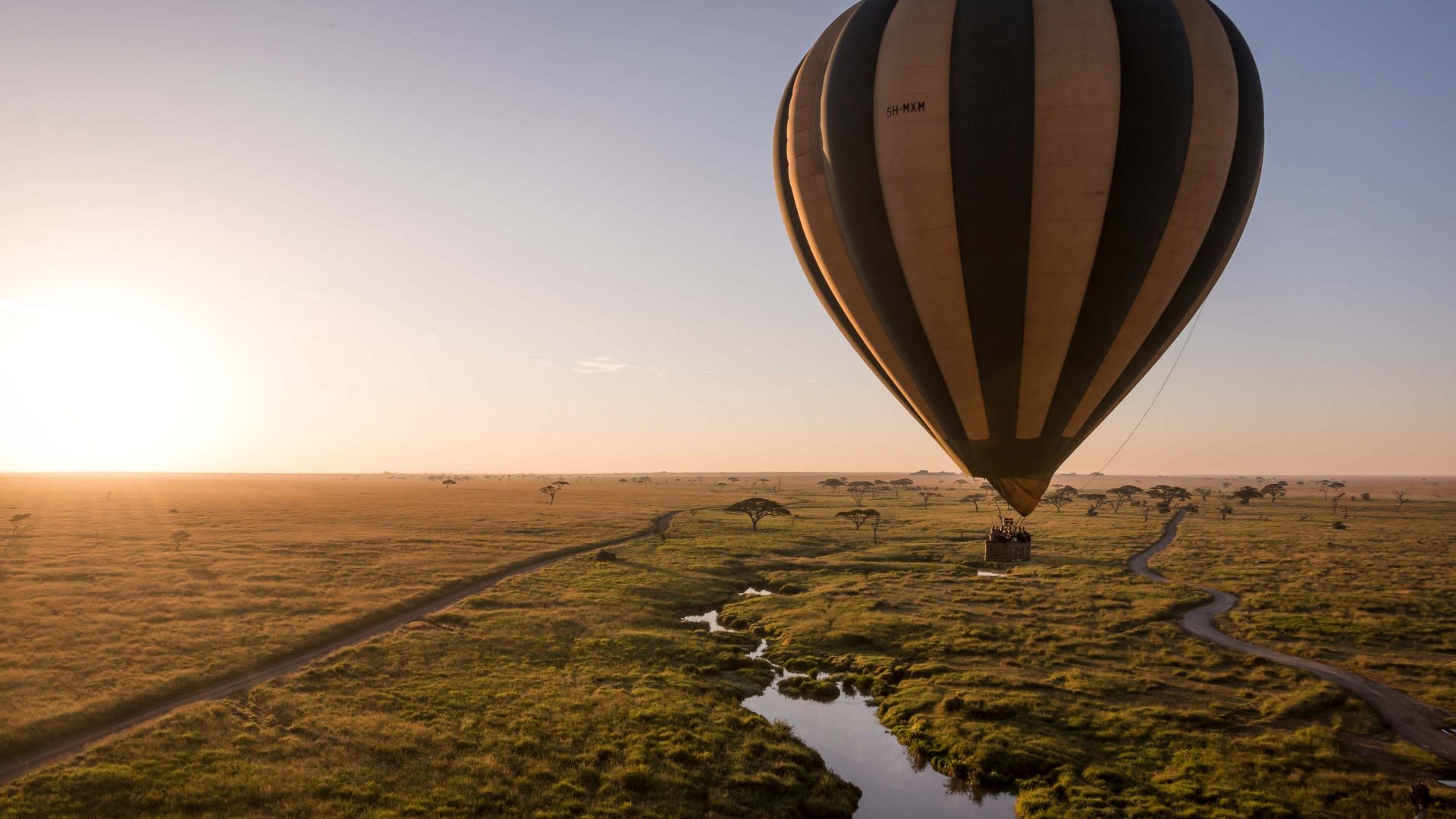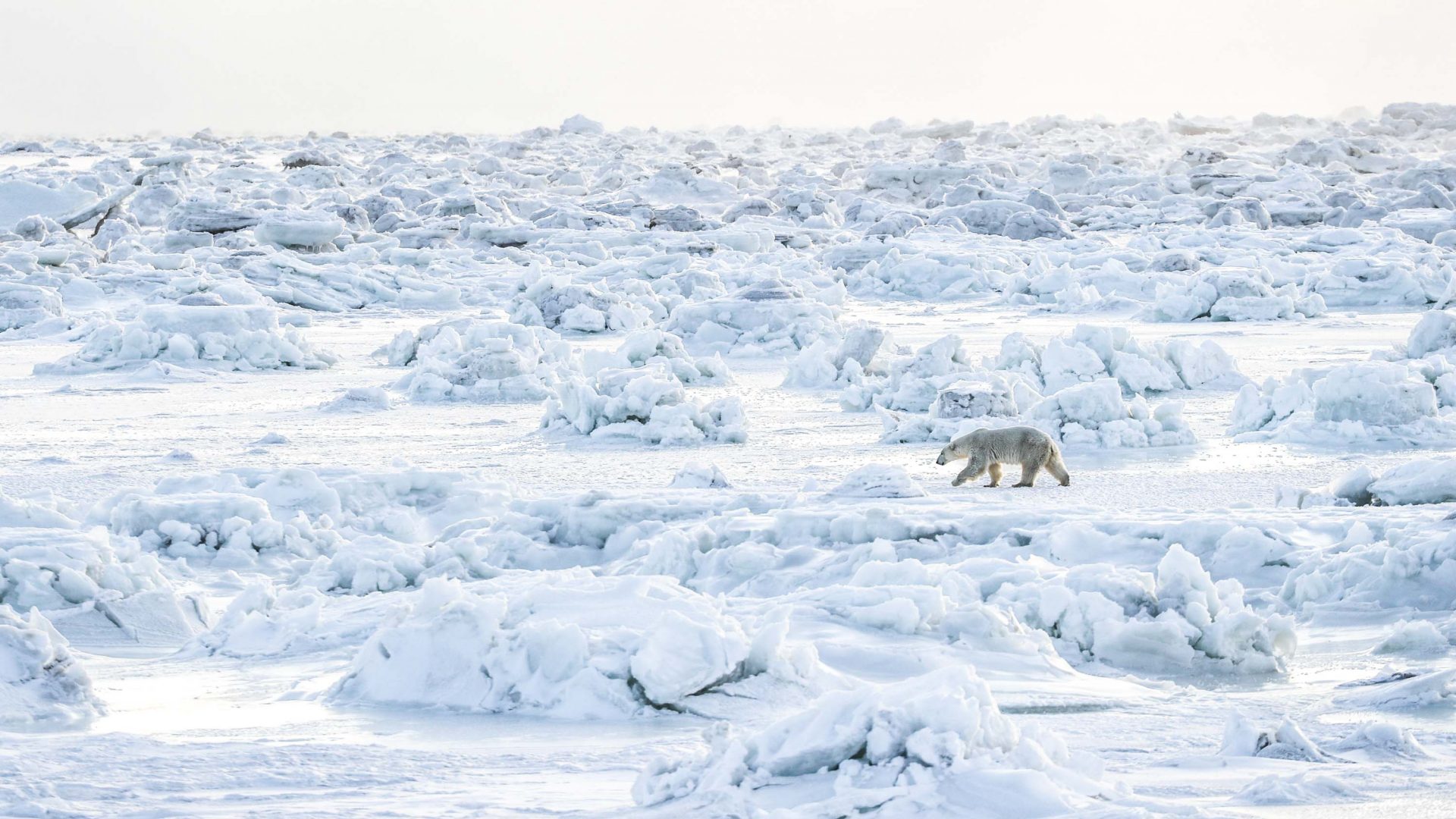Ethiopia’s wolves are one of the most endangered animals on the planet—even rarer than China’s giant panda. Travel writer Lizzie Pook crosses the remote Bale Mountains in hope of a glimpse.
“I had a wolf named after me once,” says my guide Ayuba as we clomp towards the Sanetti plateau, our horsemen clattering by, trailing pots and pans. “Every day, I’d come out here and look for him, to see how he was doing,” he says. “He’s dead now,” he concedes, with a gentle shake of the head.
We’re camping in Ethiopia’s remote Bale Mountains National Park. A wind-pitted place, home to soaring golden eagles, preying leopards, packs of spotted hyena and, in the nearby Harenna cloud forest, rare and magnificent black-maned jungle lions. The night is heavy and black. I can feel its darkness there, hovering outside the thin layer of canvas with a sort of malevolence.
All told, this is a wild part of the world. At night, we invariably set up our tents observed by curious troupes of baboon, or bed down under soaring vultures that drop the bones of their prey from great heights so that they can feast on the oozing marrow.
But it’s the wolves I’ve really come to see.
Sitting in southeast Ethiopia, 400 kilometers from the capital Addis Ababa and home to the highest plateau on the continent, earning it the name ‘the rooftop of Africa’, the Bale Mountains are less visited than the Simien Mountains in the north. And this ethereal landscape has to be seen to be believed, strewn with totem-like lobelia plants, jewel-colored swathes of heather and rock formations.
RELATED: In photos: Tracing the footsteps of Manitoba’s polar bears
This landscape is also home to the elusive Ethiopian wolf—a russet-colored, white-socked, coyote-type creature—the rarest canid in the world, and Africa’s most threatened carnivore. Decimated by habitat loss and infectious diseases carried by domestic dogs, there are now fewer than 500 of the wolves in the wild, marooned in a handful of isolated pockets in the mountains of Ethiopia.
But I’m so intent on seeing this remarkable creature—an animal even rarer than China’s giant panda—I’ve chosen to schlep my way across the vast mountain range, at altitudes reaching a lung-pinching 2,000 meters, to try and clap eyes on one.
The final night falls with a whisper, and I cocoon myself inside several layers to fight off the cold of the rain-slicked tent. But after just a couple of hours of fitful sleep, I’m awoken by a haunting sound. ‘Oooweh’, the call goes. ‘Ooweh, ooweh’. ‘I know that sound,’ I think, wrestling my way out of my sleeping bag and unzipping the tent.
In the darkness, I see that the horsemen have lit several fires, furiously stoking them to keep the flames rolling. Slowly, a prickle of recognition creeps across my neck. I know what they’re trying to keep away; why they’re trying to protect our horses. It’s hyenas. And they’re on the hunt.
Thankfully, there is no bloodshed overnight. As we commence the last leg of our journey and meander our way along stony roads, our bones aching and in a fog of dirt, dust and sweat, we see more wolves, at least half a dozen of them, foraging in the lush green earth. We watch them, in their stark, beautiful, wild, harsh environment of the Bale Mountains. And I’m happy to leave its wolves in peace.
—-
